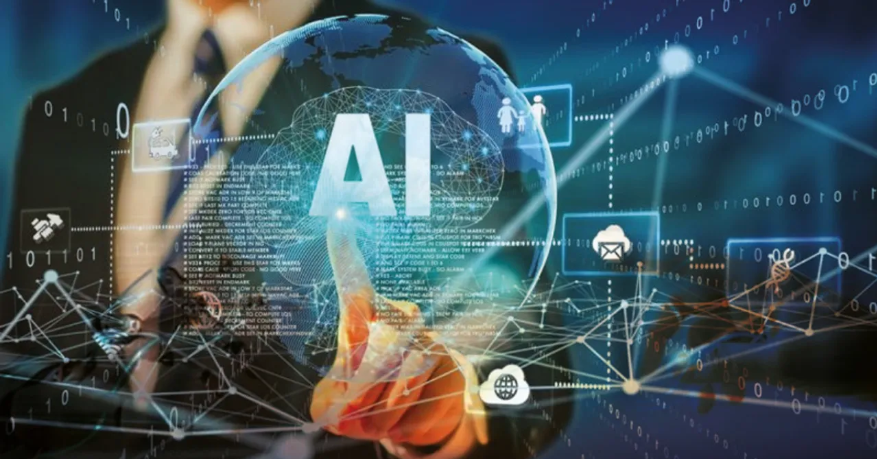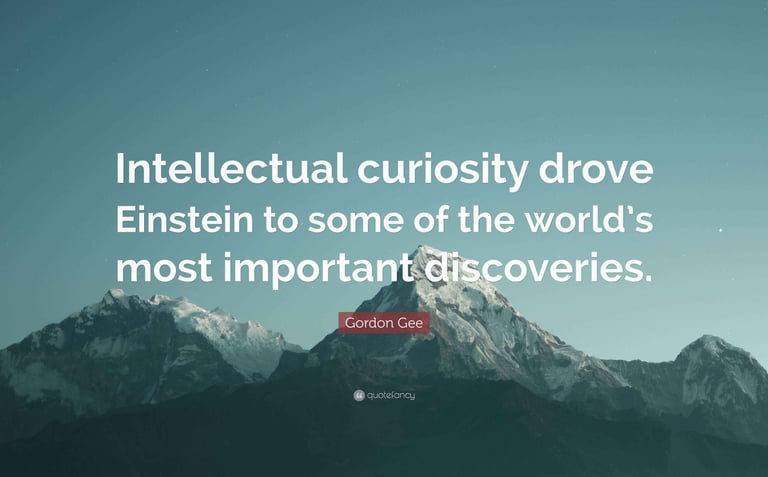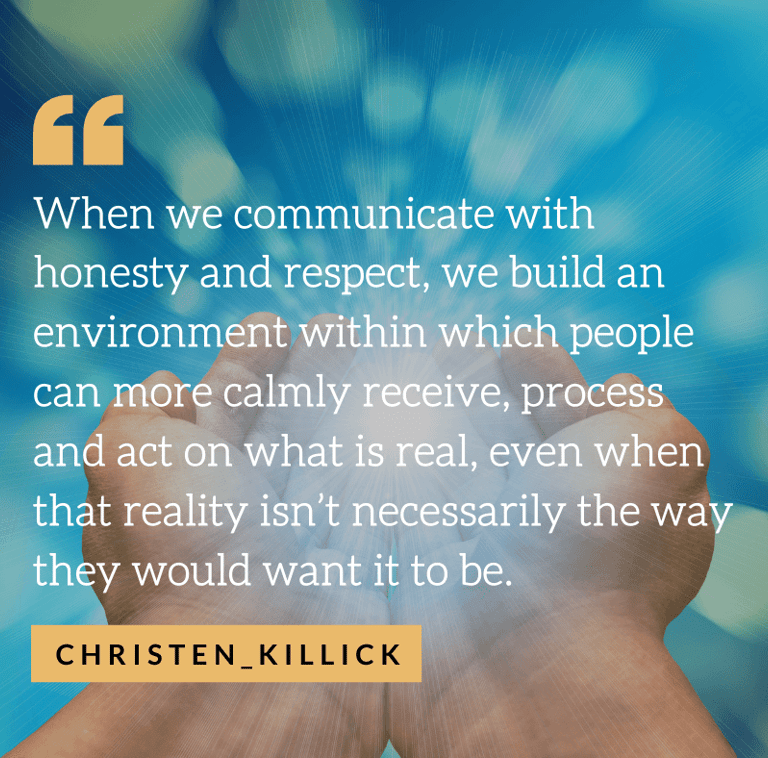Strong Workplace Culture
"Teamwork makes the dream work," Bang Gae
The significance of workplace culture extends far beyond abstract concepts or corporate mission statements hanging on office walls. A well-developed culture has a direct impact on measurable business outcomes, including employee retention rates, productivity levels, and innovation capacity. Organizations with strong cultures consistently outperform their competitors because they create environments where employees are genuinely invested in the company's success. This investment translates into higher engagement, better customer service, and more effective problem-solving across all levels of the organization.
Understanding and cultivating a strong workplace culture requires deliberate attention to multiple interconnected elements, including leadership practices, communication strategies, employee well-being, and professional development opportunities. The following analysis explores these critical components in detail, examining both the foundational elements that create a positive work environment and the tangible benefits that organizations can expect when they prioritize cultural development. By examining these aspects comprehensively, leaders can better understand how to build and maintain the kind of workplace culture that attracts top talent, drives performance, and sustains long-term organizational success.
Focus: We delve into the nuances of business communication, covering various forms like written, verbal, and digital channels.
Purpose: We aim to equip you with the knowledge and skills to navigate the complexities of communication within and outside of your organization, leading to improved efficiency and stronger connections.
Key Areas: Expect to find guidance on building strong communication strategies, understanding different communication styles, and leveraging technology for optimal information flow.
Benefits: By improving your business communication, you can enhance team cohesion, reduce misunderstandings, and build a positive and productive work environment.
Workplace culture refers to the shared values, beliefs, and behaviors that characterize an organization and influence how its employees interact and work together. It's essentially the "personality" of a company, shaping the environment and atmosphere within which employees operate. A positive workplace culture fosters a sense of belonging, encourages open communication, and promotes employee well-being, leading to increased engagement, productivity, and retention.
In today's competitive business landscape, organizational success hinges not just on products, services, or market positioning but fundamentally on the strength of workplace culture. Culture serves as the invisible backbone of any organization, shaping how employees interact, make decisions, and approach their daily work. It encompasses the shared beliefs, values, and practices that define "how things are done" within a company, influencing everything from individual performance to collective achievement.


Communication is a Fundamental Force
"The single biggest problem in communication is the illusion that it has taken place." George Bernard Shaw
The following provides a more detailed look at its impact:
Shaping Relationships: Communication is the bedrock of human connection. It allows us to build, maintain, and strengthen relationships with others. Through verbal and nonverbal cues, we express our thoughts and feelings, fostering intimacy and understanding. Miscommunication, on the other hand, can lead to conflict and misunderstandings.
Building Understanding: Communication is crucial for sharing knowledge, ideas, and perspectives. It allows us to learn from each other, broaden our understanding of the world, and develop new insights. Effective communication involves active listening, empathy, and the ability to convey information clearly and concisely.
Driving Societal Progress: Communication is essential for social interaction and societal functioning. It enables the sharing of news, warnings, and cultural knowledge, facilitating cooperation and collective action. From political discourse to scientific breakthroughs, communication plays a vital role in shaping societal norms, values, and progress.
Enhancing Collaboration and Cooperation: Communication facilitates teamwork and collaboration in various settings, from workplaces to communities. By clearly articulating goals, expectations, and feedback, communication fosters a shared understanding and enables individuals to work together effectively towards common objectives.
Meeting Relational Needs: Communication helps us fulfill our fundamental human need for connection and belonging. Through communication, we express our emotions, build relationships, and find support and validation from others.
Communication is not merely the exchange of words; it's a dynamic force that shapes our individual lives, our communities, and the world around us. This statement highlights that communication is more than just the act of speaking or writing; it's a powerful force that actively shapes our world. This understanding emphasizes that communication is a dynamic process, not a static one, and it has significant consequences for individuals, communities, and global affairs.
Why Communication Is Such a Powerful Force:
Constitutive Nature:
Communication doesn't just convey information; it creates meaning and shapes our understanding of reality. The words we use, the way we communicate, and the contexts in which we communicate all contribute to constructing our social world.
Dynamic and interactive:
Communication is not a one-way transmission of information. It's an ongoing, interactive process where meaning is constantly negotiated and renegotiated between individuals and within groups.
Impact on Relationships:
Communication is fundamental to building and maintaining relationships, both personal and professional. The way we communicate with others shapes our connections and influences how we interact with them.
Influence on Communities and Society:
Communication plays a crucial role in shaping social norms, cultural values, and political discourse. It can be a tool for social change, community building, and even conflict resolution.
Global impact:
In today's interconnected world, communication has a profound impact on international relations, cultural exchange, and the spread of information. Miscommunication or lack of communication can have far-reaching consequences on a global scale.
Communication plays a crucial role in personal and professional development, empowering individuals to express themselves confidently, advocate for their needs, and learn from others' experiences. In professional settings, strong communication skills directly contribute to career advancement by enabling leaders to inspire teams, build strategic relationships, and articulate clear visions that motivate action. This capacity for influence extends beyond individual success to drive broader positive change, as effective communicators can share values, promote important causes, and create ripple effects that transform organizations and communities. In collaborative environments, communication enables individuals to coordinate efforts, share innovative ideas, and work collectively toward common objectives. When conflicts arise, skilled communication provides the platform for understanding different viewpoints and finding mutually beneficial solutions that strengthen rather than divide relationships.
Communication serves as the fundamental force that shapes human experience, functioning as far more than simple information exchange. It operates as the primary mechanism through which we navigate relationships, understand our world, and develop our sense of self from birth onward. This essential human capacity influences every dimension of our lives, serving as the bridge between internal thoughts and external reality, and between individual experience and collective understanding. Communication's profound impact extends beyond casual conversation to function as the invisible infrastructure supporting psychological well-being, cognitive development, and the complex social structures that define civilization itself.
At the heart of human relationships, effective communication serves as both the foundation for initial connections and the mechanism for deepening bonds over time. Through open dialogue, we build trust, express emotions and needs, and create the understanding necessary for meaningful relationships to flourish. In collaborative environments, communication enables individuals to coordinate efforts, share innovative ideas, and work collectively toward common objectives. When conflicts arise, skilled communication provides the platform for understanding different viewpoints and finding mutually beneficial solutions that strengthen rather than divide relationships. Perhaps most importantly, communication serves as the primary vehicle for knowledge transfer and understanding, ensuring vital information reaches those who need it while minimizing misunderstandings that can derail progress.


Clear communication creates environments where trust flourishes, productivity increases through well-defined expectations, and inclusivity grows through genuine efforts to understand diverse perspectives. By mastering communication skills, individuals not only enhance their own lives but also contribute to building a more collaborative, understanding, and productive society where meaningful connections and positive change become possible.
Building A Strong Workplace Culture
"If communication is about creating understanding, mindful communication is about creating understanding through awareness." -Oren Jay Sofer
A strong workplace culture is not just about perks and benefits; it's about creating an environment where employees feel valued, respected, and empowered to do their best work. Investing in workplace culture is an investment in the organization's future. By creating an atmosphere where employees thrive, companies can achieve not only improved morale but also better overall performance and success. Workplace culture is characterized by positive employee relationships, clear communication, and a shared sense of purpose and values. It fosters a positive, inclusive environment where employees feel respected, engaged, and motivated to contribute to the organization's success. The following is a more detailed look at the key elements and benefits of a strong workplace culture:
Key Elements:
Leadership:
Strong leadership is crucial. Leaders should be visible, accessible, and set a positive example by aligning their actions with core values.
Communication:
Open and transparent communication is vital. This includes regular feedback, both positive and constructive, and creating opportunities for employees to share their ideas and concerns.
Core Values:
A strong culture is built on a foundation of shared core values that guide employee behavior and decision-making.
Employee Wellbeing:
Prioritizing employee well-being is essential. This includes promoting work-life balance, offering support for mental and physical health, and fostering a sense of community.
Collaboration:
Encouraging teamwork and collaboration helps create a sense of belonging and shared purpose.
Recognition and Rewards:
Recognizing and rewarding employees for their contributions is important for motivation and engagement.
Opportunities for Growth:
Providing opportunities for professional development and career advancement helps employees feel valued and invested in the organization's future.
Psychological Safety:
A psychologically safe environment allows employees to feel comfortable taking risks, expressing their opinions, and learning from mistakes.
Diversity and Inclusion:
A diverse and inclusive workplace ensures that all employees feel valued and respected, regardless of their background.
Benefits of a Strong Workplace Culture:
Increased Employee Engagement:
When employees feel valued and connected to their workplace, they are more likely to be engaged and motivated.
Higher Productivity:
A positive and supportive work environment can lead to increased productivity and efficiency.
Improved Employee Retention:
Employees are more likely to stay with an organization that has a strong and positive culture.
Enhanced Innovation:
A culture that encourages creativity and open communication can foster innovation and new ideas.
Stronger Employer Brand:
A good workplace culture can attract top talent and enhance the organization's reputation.
A strong workplace culture goes beyond the offering of perks and benefits; it revolves around establishing an environment in which employees feel valued, respected, and empowered to perform at their best. This foundational aspect of an organization fosters not only individual satisfaction but also collective success.
When employees feel appreciated, their engagement levels increase, leading to higher productivity and enhanced collaboration. Respect and empowerment are critical components that allow team members to contribute their ideas and feedback openly, driving innovation and improvement throughout the organization.
To cultivate a proactive workplace culture, leaders should focus on clear communication, recognition of achievements, and opportunities for professional development. Encouraging a sense of belonging and inclusion ensures that all team members understand their importance within the organization.


AI-Powered Communication Tools
"The future of AI is not about replacing humans, it's about augmenting human capabilities" Sundar Pichai
The revolutionary impact of these incredible communication tools extends beyond simple convenience to address fundamental challenges in modern workplace dynamics. Advanced chatbots and virtual assistants can now handle routine inquiries, freeing human employees to focus on more strategic and creative tasks. AI-powered sentiment analysis helps managers gauge team morale and identify potential issues before they escalate, while intelligent content generation assists in creating clear, professional communications tailored to specific audiences. These tools also excel at personalizing communication experiences, learning individual preferences and communication styles to optimize message delivery and reception across diverse teams. Perhaps most significantly, AI communication tools are democratizing access to high-quality communication capabilities across organizations of all sizes. Small businesses can now access enterprise-level communication features through AI-powered platforms, while large corporations can scale their communication efforts more efficiently than ever before. The integration of AI into communication workflows is creating more inclusive environments where language differences, time constraints, and varying communication skills no longer serve as barriers to effective collaboration. As these tools continue to evolve, they promise to further enhance human connection and understanding in the workplace, ultimately leading to more productive, engaged, and satisfied teams.
Perhaps most significantly, AI communication tools are democratizing access to high-quality communication capabilities across organizations of all sizes. Small businesses can now access enterprise-level communication features through AI-powered platforms, while large corporations can scale their communication efforts more efficiently than ever before. The integration of AI into communication workflows is creating more inclusive environments where language differences, time constraints, and varying communication skills no longer serve as barriers to effective collaboration. As these tools continue to evolve, they promise to further enhance human connection and understanding in the workplace, ultimately leading to more productive, engaged, and satisfied teams.
The landscape continues to expand with more advanced conversational AI systems that can engage in complex, multi-turn dialogues, assist with creative writing, provide customer support, and even serve as virtual collaborators for brainstorming and problem-solving. Social media platforms increasingly rely on AI for content moderation, sentiment analysis, and personalized communication recommendations, while chatbots have evolved from simple rule-based systems to sophisticated assistants capable of handling nuanced customer inquiries across industries. These tools are also transforming accessibility by providing voice-to-text capabilities for individuals with hearing impairments, text-to-speech for those with visual challenges, and predictive text systems that help users with motor disabilities communicate more efficiently. As AI technology continues advancing, we're seeing the emergence of tools that can adapt to individual communication styles, learn from user preferences, and provide increasingly personalized assistance that enhances rather than replaces human expression and connection.
Sundar Pichai has frequently discussed the transformative potential of AI, particularly highlighting its impact on productivity and the future of work. He's noted that AI is making Google's engineers more productive, estimating a 10% increase in engineering capacity due to AI tools. He also emphasizes AI as a horizontal enabling layer, impacting nearly all aspects of life and work, similar to the impact of electricity
Key points from Pichai's perspective on AI:
Increased Productivity:
Pichai has specifically mentioned the 10% productivity increase for Google engineers due to AI tools Business Insider says. This suggests a broader trend of AI boosting efficiency across various tasks and industries.
Horizontal Enabling Layer:
Pichai views AI as a foundational technology, like electricity, that will impact all sectors. This implies a pervasive role for AI in the future.
Future of Work:
While acknowledging the potential for job displacement, Pichai also emphasizes the opportunities for AI to augment human capabilities and create new roles. He envisions a future where humans and AI collaborate to achieve more than either could alone.
Responsible Development:
Pichai frequently speaks about the need for responsible AI development, emphasizing ethical considerations, safety, and fairness. He has called for regulations and guidelines to ensure AI is used for societal benefit.


Intellectual Curiosity
I’ve learned that people will forget what you said, people will forget what you did, but people will never forget how you made them feel.” Maya Angelou
The cultivation of intellectual curiosity yields significant benefits for both personal growth and professional development. Curious individuals tend to be more adaptable and resilient when facing change, as their natural inclination to explore and understand helps them navigate uncertainty with confidence. In workplace environments, intellectual curiosity drives innovation and creative problem-solving, as curious employees are more likely to identify opportunities for improvement, question existing processes, and propose novel solutions. This trait also enhances learning capacity, enabling individuals to acquire new skills more effectively and retain information longer through meaningful engagement rather than rote memorization. Furthermore, intellectual curiosity fosters empathy and understanding in interpersonal relationships, as curious people naturally seek to understand others' perspectives, motivations, and experiences.
Intellectual curiosity is the drive to understand and learn, seeking deeper meaning and engaging with new information and ideas with enthusiasm. It is characterized by a strong drive to explore, a willingness to engage with new information and perspectives, a tendency to ask questions, and a desire to understand the "why" behind things. Intellectual curiosity can be beneficial in various aspects of life, including career, personal development, and learning. It can lead to a more engaged and fulfilling work experience, increased job satisfaction and success, and enhanced critical thinking, problem-solving skills, and overall well-being.
Examples of intellectual curiosity include seeking information on topics that interest them, engaging in debates and discussions, questioning assumptions, and making connections between different subjects and real-world applications. Cultivating intellectual curiosity can be achieved through various activities, such as reading widely, engaging in discussions and debates, seeking mentors, and exploring interests through hobbies and activities. Intellectually curious people tend to cultivate certain habits that consistently fuel their learning and growth.
Developing and maintaining intellectual curiosity requires intentional practice and a supportive environment that rewards questioning and exploration. This involves embracing a beginner's mindset, where individuals remain open to new information and are willing to admit when they are unknowing. Effective strategies include reading widely across diverse subjects, engaging in thoughtful conversations with people from different backgrounds, and regularly challenging one's own beliefs and assumptions. Organizations and educational institutions can foster curiosity by creating psychological safety for questioning, providing resources for independent exploration, and celebrating learning from failures as much as successes. Ultimately, intellectual curiosity catalyzes lifelong learning, professional growth, and meaningful engagement with the world around us.


Intellectual curiosity represents the innate drive to seek knowledge, ask questions, and explore ideas beyond immediate practical needs or requirements. This fundamental human trait manifests as a genuine desire to understand how things work, why events occur, and what lies beneath surface-level explanations. Intellectually curious individuals are characterized by their willingness to challenge assumptions, explore unfamiliar territories of thought, and engage with complex problems even when solutions aren't immediately apparent. This curiosity extends beyond formal educational settings, influencing how people approach everyday situations, relationships, and professional challenges. Rather than accepting information passively, curious minds actively seek deeper understanding, ask follow-up questions, and make connections between seemingly unrelated concepts.
Active Listening
Listen with curiosity. Speak with honesty. Act with integrity. Roy T. Bennett
Listening is the learned process of receiving, interpreting, recalling, evaluating, and responding to verbal and nonverbal messages. We begin to engage with the listening process long before we engage in any recognizable verbal or nonverbal communication. Active Listening is a skill that can be developed and improved with practice, yet it remains one of the most undervalued and underdeveloped communication abilities in both personal and professional contexts. Unlike hearing, which is a passive physiological process, effective listening requires active mental engagement, emotional intelligence, and deliberate focus. Many people mistakenly believe that listening comes naturally, but true listening involves complex cognitive processes, including filtering distractions, interpreting nonverbal cues, processing emotional undertones, and temporarily setting aside one's thoughts and judgments to fully absorb another person's message. The challenge lies in overcoming our natural tendency to formulate responses while others are speaking or to listen selectively for information that confirms our existing beliefs. When individuals commit to developing their listening capabilities through consistent practice and self-awareness, they begin to notice profound improvements not only in their ability to understand others but also in how others perceive and respond to them.
By making a conscious effort to listen completely, communication skills can be enhanced, and stronger relationships can be built across all areas of life. Complete listening involves giving speakers undivided attention, asking clarifying questions, reflecting what has been heard, and demonstrating genuine interest in understanding their perspective rather than simply waiting for an opportunity to respond. This level of engagement creates a foundation of trust and respect that transforms ordinary conversations into meaningful exchanges where both parties feel valued and understood. The ripple effects of improved listening extend far beyond individual interactions—teams become more collaborative, conflicts are resolved more effectively, and creative solutions emerge more readily when all members feel truly heard. Moreover, as people experience the profound impact of being completely listened to, they naturally begin to reciprocate with more thoughtful and engaged communication of their own, creating a positive cycle that strengthens relationships and enhances overall communication effectiveness within any group or organization. Listening communication, particularly active listening, is crucial for effective communication and building strong relationships. It involves more than just hearing words; it's about actively engaging with the speaker, understanding their message, and showing that you're engaged. Active listening fosters empathy, reduces misunderstandings, and strengthens connections. By practicing active listening, you can significantly improve your communication skills and build stronger, more meaningful relationships.
The Importance of Active Listening
Improved Understanding: Active listening helps you grasp the speaker's intended message, including their emotions and perspectives.
Stronger Relationships: When people feel heard and valued, it builds trust and rapport, leading to stronger relationships in both personal and professional settings.
Enhanced Problem-Solving: By truly understanding the issue at hand, you can contribute more effectively to finding solutions.
Reduced Conflict: Active listening can help de-escalate tense situations by demonstrating empathy and seeking to understand the other person's viewpoint.
Better Communication: Active listening ensures that both the speaker and the listener are fully engaged, leading to more meaningful and productive conversations.
Key Elements of Active Listening:
Paying attention:
Giving the speaker your undivided attention, minimizing distractions, and making eye contact.
Showing that you're listening:
Using body language like nodding, maintaining an open posture, and using verbal cues like "uh-huh" or "yes" to show you're engaged.
Providing feedback:
Reflecting on what you've heard by paraphrasing or summarizing the speaker's points, and asking clarifying questions.
Deferring judgment:
Avoid interrupting or formulating your response while the speaker is still talking, and refrain from judgment or counterarguments.
Responding appropriately:
Showing empathy and understanding in your response and acknowledging the speaker's feelings.
By making a conscious effort to listen completely, communication skills can be enhanced, and stronger relationships can be built across all areas of life. Complete listening involves giving speakers undivided attention, asking clarifying questions, reflecting what has been heard, and demonstrating genuine interest in understanding their perspective rather than simply waiting for an opportunity to respond. This level of engagement creates a foundation of trust and respect that transforms ordinary conversations into meaningful exchanges where both parties feel valued and understood. The ripple effects of improved listening extend far beyond individual interactions—teams become more collaborative, conflicts are resolved more effectively, and creative solutions emerge more readily when all members feel truly heard. Moreover, as people experience the profound impact of being completely listened to, they naturally begin to reciprocate with more thoughtful and engaged communication of their own, creating a positive cycle that strengthens relationships and enhances overall communication effectiveness within any group or organization. Practicing active listening can significantly improve your communication skills and build stronger, more meaningful relationships. Active listening is crucial for effective communication because it fosters understanding, builds trust, and strengthens relationships. By actively engaging with the speaker, both verbally and nonverbally, you demonstrate respect and create a safe space for open communication, ultimately leading to better outcomes in personal and professional settings. Listening is often something we take for granted. It is common that people often hear what is being said, but hearing is a lot different from listening. To listen, we need to make a conscious effort not to just hear what people are saying but to take it in, digest it, and understand it. Not only does listening enhance your ability to understand better and make you a better communicator, but it also makes the experience of speaking to you more enjoyable to other people. Why don’t we listen sometimes? Our ability to properly listen can be influenced by a number of things that could be going on in our own lives or bad habits we have picked up. More than ever, it is easy to become distracted by something or by our thoughts, which disengage us from what is being said. Some of the reasons why we don’t properly listen are being wrapped up in our thoughts. Being distracted by something, we have already formulated a response. Something conflicting with our opinion is why listening is important. Listening plays an integral part in communicating, and the differences from actively listening can be seen in multiple facets of our lives and development. Active listening helps to learn and understand things better in a social and professional environment. Become better at socializing. It's better to sympathize with friends and family. Build stronger relationships by making people feel valued. Improve problem-solving skills and absorb information better.


Effective Communication Strategies
"Effective communication is 20% what you know and 80% how you feel about what you know." - Jim Rohn
Communication is the cornerstone of a thriving organization, fostering collaboration, productivity, and employee engagement. In today's fast-paced and interconnected business landscape, communicating clearly, openly, and transparently is more critical than ever, from exploring key strategies for improving workplace communication to building trust to enhancing communication skills to utilizing technology and addressing challenges. By prioritizing effective communication practices, organizations can create a culture of openness, collaboration, and success. Clear communication channels and protocols are essential for a productive work environment. Establishing structured channels, such as emails, team meetings, or collaboration tools, can prevent mishaps and boost productivity. Developing communication protocols for different situations can help navigate tricky conversations smoothly, ensuring everyone is on the same page and reducing misunderstandings. Communication barriers, such as language differences, lack of feedback, or poor listening skills, can disrupt workplace communication. Recognizing these barriers can help address issues head-on and pave the way for smoother interactions.
Effective Communication Strategies
Effective workplace communication begins with establishing clear channels and promoting active engagement among team members. Organizations must create robust mechanisms for providing and receiving feedback that focus on positive reinforcement while identifying specific areas for improvement. This involves encouraging active listening where team members pay careful attention to, understand, and respond thoughtfully to each other's communications. The foundation of successful workplace interaction rests on using clear and concise language that avoids jargon, ambiguity, and unnecessary complexity, ensuring that simple, direct communication reaches everyone effectively. By fostering an open communication environment where team members feel comfortable sharing ideas, questions, and concerns, organizations create the psychological safety necessary for meaningful collaboration. Leveraging multiple communication channels, including face-to-face conversations, email, phone calls, and video conferencing, ensures that different communication preferences and situations are accommodated.
The strategic implementation of transparent communication practices significantly enhances team effectiveness and organizational success. Promoting transparency through sharing relevant information keeps everyone informed and aligned, while establishing clear roles and responsibilities eliminates confusion and ensures accountability across all team members. Encouraging participation creates an environment where diverse perspectives and ideas are valued, leading to more innovative solutions and stronger team cohesion. Organizations that address conflicts constructively by developing respectful and productive strategies for resolving disagreements create healthier work environments. Providing consistent feedback regularly helps team members understand their strengths and areas for improvement, while setting clear expectations through well-defined goals, objectives, and timelines ensures everyone understands their contributions to project success. These practices work together to create a communication framework that supports both individual growth and collective achievement.
The benefits of implementing comprehensive communication strategies extend far beyond simple information exchange to transform workplace culture and performance. Smooth communication directly increases productivity and efficiency by enabling tasks to be completed more effectively and projects to be executed with greater precision. Building trust and relationships through open and honest communication strengthens colleague connections and creates a more collaborative work environment. When employees feel heard and valued through improved communication practices, their engagement and motivation increase substantially, leading to better retention and job satisfaction. Effective communication skills prove essential for facilitating conflict resolution and finding common ground when disagreements arise. Organizations that prioritize developing comprehensive communication strategies, including opportunities for informal interaction and team-building activities, foster camaraderie and shared purpose that creates positive team culture and sustained organizational success.
Resolving communication conflicts can be prevented in the workplace by using techniques like active listening, compromise, or seeking mediation. Promoting a culture of open communication and feedback encourages open feedback and constructive communication, creating a culture where ideas flow freely, improvements are welcomed, and growth is nurtured. Fostering a culture of openness and collaboration can transform individual efforts into a symphony of teamwork. Embracing transparency, sharing knowledge, and celebrating achievements together can create a workplace where communication thrives and success becomes a team sport. Prioritizing and implementing effective communication strategies in the workplace is essential for fostering a positive and productive work environment. By building trust, enhancing skills, leveraging technology, and promoting open communication channels, organizations can overcome challenges, resolve conflicts, and ultimately drive success.


Critical Thinking
"Much of what I stumbled into by following my curiosity and intuition turned out to be priceless." Steve Jobs
In communication contexts, critical thinking manifests as the ability to distinguish between fact and opinion, identify logical fallacies, recognize bias and emotional manipulation, and construct well-reasoned arguments supported by reliable evidence. This skill becomes particularly crucial in our information-rich environment, where individuals must navigate complex messages, competing perspectives, and potentially misleading content across various communication channels.
The application of critical thinking transforms both the sending and receiving aspects of communication, leading to more meaningful and productive interactions. When communicating, critical thinkers carefully consider their audience, choose appropriate evidence to support their points, and structure their messages logically to maximize understanding and persuasion. As recipients of communication, they ask probing questions, seek clarification when needed, and evaluate the consistency and validity of the information being presented. This approach helps prevent misunderstandings, reduces the spread of misinformation, and ensures that decisions are based on sound reasoning rather than emotional reactions or incomplete information. Critical thinking also enables individuals to engage in constructive dialogue, even when facing disagreement, by focusing on evidence and logical reasoning rather than personal attacks or unsupported claims. Developing critical thinking skills for communication requires deliberate practice and ongoing commitment to intellectual honesty and self-reflection. This involves learning to question one's assumptions and biases, seeking out diverse perspectives on complex issues, and being willing to change positions when presented with compelling evidence. Effective strategies include analyzing the structure of arguments, practicing active listening to fully understand others' viewpoints before responding, and regularly fact-checking information from multiple reliable sources. Educational and professional environments can foster critical thinking by encouraging open debate, teaching logical reasoning skills, and creating opportunities for individuals to practice evaluating and constructing arguments. Ultimately, critical thinking in communication serves as a foundation for informed decision-making, effective problem-solving, and meaningful civic engagement in an increasingly complex world.


Critical thinking is the process of analyzing and evaluating information to form a reasoned judgment or conclusion. It involves questioning assumptions, recognizing biases, and assessing evidence objectively. It helps improve decision-making and reasoning. Key aspects include analysis, interpretation, evaluation, inference, explanation, and self-regulation. Critical thinking is important for decision-making, problem-solving, navigating uncertainty, personal growth, and civic engagement. It helps in making informed choices, identifying and solving problems, managing complex situations, refining understanding, and engaging in meaningful public discourse.
Critical thinking in communication involves the systematic evaluation of information, arguments, and ideas to ensure a clear, logical, and effective exchange of messages. This cognitive process requires individuals to move beyond surface-level acceptance of information and instead analyze the credibility of sources, examine underlying assumptions, and assess the strength of evidence presented.
Honest Communication
"Honest communication is rooted in telling the truth and avoiding deception or misrepresentation." - Unknown
Honest communication in the workplace is essential for creating a healthy and productive work environment. It involves the transparent sharing of information, ideas, and concerns among employees and management. This openness helps prevent misunderstandings, facilitates conflict resolution, and builds trust throughout the organization. When employees feel safe and valued in expressing their thoughts, it naturally leads to higher job satisfaction, increased engagement, and improved collaboration across teams.
The benefits of honest communication are extensive and impact multiple aspects of workplace dynamics. It strengthens interpersonal relationships by fostering trust and respect, while also enhancing employee engagement and productivity through increased collaboration and innovation. Honest communication also improves decision-making processes by ensuring that diverse perspectives and information are shared openly. Additionally, it creates stronger team dynamics, reduces employee turnover, increases accountability, and helps resolve conflicts before they escalate into larger problems.
To promote honest communication effectively, organizations must focus on creating the right environment and practices. Leadership plays a crucial role by modeling transparent communication and creating safe spaces where employees can express opinions without fear of negative consequences. Key strategies include encouraging two-way communication, practicing active listening, using clear language, providing regular feedback, and addressing conflicts directly. Building a culture of trust through consistent actions and celebrating successes also reinforces the importance of openness and encourages continued honest dialogue throughout the organization.
Honest communication, also known as candid or transparent communication, is a key element of healthy relationships and effective interactions in various settings, including personal and professional ones.
What Does it Mean?
Being straightforward and truthful: Expressing your thoughts, feelings, needs, and opinions openly and without misleading others.
Avoiding obfuscation: Ensuring your message is clear and easy to understand, avoiding overly confusing language.
Being sincere: Communicating with integrity and authenticity.
Building trust and understanding: Honest communication builds a foundation of trust and allows for deeper understanding between individuals.
Importance and Benefits:
Strengthens relationships: Honest communication fosters trust, enhances emotional connection, and facilitates conflict resolution.
Improves conflict resolution: Addressing issues openly and honestly helps identify root causes and work collaboratively towards solutions.
Encourages personal growth: Expressing your thoughts and feelings openly can lead to self-awareness and personal development.
Promotes healthy boundaries: Honest communication allows individuals to establish and respect boundaries, creating healthier dynamics.
Creates a positive workplace culture: In the workplace, honest communication fosters a trusting environment, improves team performance, and encourages open dialogue.
Challenges of Honest Communication:
Fear of conflict or rejection: Many people avoid tough conversations due to fear of being judged or causing conflict.
Lack of communication skills: Some individuals may lack the necessary skills for effective communication.
Cultural and language barriers: Different cultural norms and language differences can create communication challenges.
Power imbalances: Perceived power imbalances can hinder honest communication, making individuals hesitant to speak up.
Practicing Honest Communication:
Self-awareness and emotional intelligence: Understand your own emotions and needs to communicate more effectively.
Clear and concise language: Use straightforward language to avoid misunderstandings.
Empathy and active listening: Listen attentively to others, showing genuine interest and seeking to understand their perspective.
Address issues promptly: Don't let problems linger; address them respectfully and seek solutions.
Be patient and seek support: Developing honest communication takes time and practice. Consider seeking professional help if needed.
Honest communication is characterized by transparency, sincerity, and accuracy in conveying messages, both verbally and nonverbally. It involves expressing thoughts, feelings, and needs openly and without manipulation, fostering trust and understanding. This approach encourages authenticity and vulnerability, allowing for stronger relationships built on mutual respect and empathy. Honest communication is a crucial aspect of building strong relationships and achieving success in various areas of life. It requires courage, vulnerability, and a willingness to be open and truthful while remaining respectful of others.

